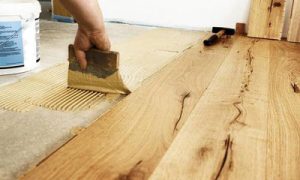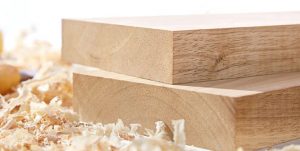Plywood formwork is the framework in the construction industry. The construction industry cannot proceed smoothly without building formwork. Building formwork designs the appearance of the building. As long as it is carried out within this framework, the work can be completed well. The building formwork optimizes the structure of the concrete, positions the components, and specifies the geometric dimensions. The building formwork can bear its own weight and the weight of the concrete, and also ensures a strong combination of the building formwork structure. It is truly non-deformable and non-destructive, safe and reliable. The use of building formwork has greatly improved the specifications of the project. Building formwork mainly consists of a structure of links, panels and supports. The function of each part is: the link is mainly to link the panel and the supporting structure to ensure their organic combination; the function of the support is mainly to support the weight of the building formwork and controls; and the panel is the bearing plate of the concrete. This structure is both safe and strong, ensuring the quality of the building formwork. According to their materials, building formwork can be divided into wood glue building plywoods, multi-layer formwork plywoods, and double-layer building formwork plywood. The most popular on the market is the combined template. This combination makes the template easy to assemble and has strong versatility. The building formwork is a temporary structure that can be changed at any time as needed, and the model can be produced quickly.
Common quality issues
Axis displacement, axis deviation; skew and incorrect elevation
The geometric size deviation is large and the cross-sectional area does not meet the requirements;
The brackets, ejector rods, and fixing clips are not firmly fixed, causing collapse, mold running, slurry leakage, and holes.
Precaution
Preventive measures for common quality problems in building formwork projects on the market mainly include the phenomenon and preventive measures of axis displacement of building formwork, the phenomenon and preventive measures of structural deformation of building formwork, and the phenomenon and preventive measures of elevation deviation of building formwork. The contents are as follows:
Ⅰ.Axis displacement phenomenon and prevention
1.The phenomenon of axis displacement of building formwork
When the building formwork was removed after the concrete was poured, it was discovered that the actual positions of the columns and walls were offset from the axis of the building.
2.Analysis of the causes of axis displacement of building formwork
(1)The sample was not carefully copied or the technical explanation was unclear, and the components were not in place according to regulations when the building formwork was assembled.
(2)Error occurs in axis measurement and placement.
(3)There are no positioning measures or weak positioning measures at the roots and tops of the building formwork of walls and columns. After the deviation occurs, it is not corrected in time, resulting in accumulated errors.
(4)When setting up the formwork, the horizontal and vertical lines were not pulled, and there were no vertical verticality control measures.
(5)The stiffness of the building formwork is poor, and there are no horizontal tie rods or the distance between horizontal tie rods is too large.
(6)When concrete is poured, the material is not cut evenly and symmetrically, or the height of one pour is too high, causing large lateral pressure and squeezing the building formwork.
(7)Axis deviation caused by improper use or loosening of tension bolts, jacking supports and wooden wedges.
3.Preventive and control measures for axis displacement of building formwork
(1)Strictly convert each part and sub-item into detailed drawings according to the ratio of 1/10-1/15 and indicate the part number, axis position, geometric size, cross-sectional shape, reserved holes, embedded parts, etc. After verification, we will carefully conduct technical briefings to the production team and operating workers, which will serve as the basis for the production and installation of building formwork.
(2)After the axis of the building formwork is measured and laid out, a dedicated person will be organized to conduct technical review and acceptance. Only after confirmation can the formwork be installed.
(3)Reliable limit measures must be installed at the roots and pre-parts of the wall and column building formwork, such as short steel bars embedded in the cast-in-place floor slab concrete to fix steel supports to ensure accurate bottom position.
(4)When supporting the formwork, horizontal and vertical lines must be pulled and vertical verticality control lines must be set up to ensure accurate horizontal and vertical positions of the building formwork.
(5)According to the characteristics of the concrete structure, the building formwork is specially designed to ensure that the building formwork and its supports have sufficient strength, stiffness and stability.
(6)Before pouring concrete, carefully inspect and review the axis of the building formwork, brackets, jacking supports, and bolts, and deal with any problems found in a timely manner.
(7)When pouring concrete, the material should be cut evenly and symmetrically, and the pouring height should be strictly controlled within the range allowed by the construction specifications.
Ⅱ.Structural deformation phenomena and prevention
1.The phenomenon of structural deformation of building formwork
After removing the formwork, it was found that the concrete columns, beams, and walls were bulging, necking, or warping.
2.Analysis of the causes of structural deformation of building formwork
(1)The distance between supports and purlins is too large, and the stiffness of the building formwork is poor.
(2)When assembling small steel formwork, the connectors are not set according to regulations, resulting in poor integrity of the building formwork.
(3)The wall building formwork has no tension bolts or the bolt spacing is too large and the bolt specifications are too small.
(4)The vertical load-bearing supports were not compacted firmly on the foundation soil, and there were no flat plates and no drainage measures, causing the foundation to sink along with the supports.
(5)The support between the inner molds of the door and window openings is not strong, and the building formwork is easily squeezed during concrete vibration.
(6)The distance between the clamps of the beam and column building formwork is too large, or the building formwork is not clamped, or the number of pull bolts is insufficient, so that the local building formwork cannot withstand the lateral pressure generated during concrete vibration, resulting in local mold explosion.
(7)The speed of pouring concrete for walls and columns is too fast, the height of one pouring is too high, and the vibration is excessive.
(8)Wooden building formwork or plywood is used for construction, but concrete is not poured in time after acceptance inspection, resulting in surface deformation caused by long-term exposure to the sun and rain.
3. How to solve the problem of structural deformation of building formwork
(1) When designing the building formwork and support system, full consideration should be given to its own weight, construction load, concrete yield, and lateral pressure generated during pouring to ensure that the building formwork and brackets have sufficient load-bearing capacity, stiffness, and stability. .
(2) The spacing between beam bottom supports should be able to ensure that no deformation occurs under the weight of concrete and construction loads. If the bottom of the support is a soil foundation, it should be carefully tamped first, drainage ditches should be set up, and full-length pads or steel should be laid to ensure The support does not sink.
(3) When assembling the small steel formwork, the connectors should be placed according to regulations, and the spacing and specifications of the purlins and pull bolts should be set according to the design requirements.
(4) If clams are used in the beam and column building formwork, the spacing should be specified and the building formwork should be clamped tightly, and its width should be slightly smaller than the cross-sectional size.
(5) The upper part of the beam and wall building formwork must have temporary bracing heads to ensure the width of the beam and wall openings when concrete is poured.
(6) When pouring concrete, it must be uniform and symmetrical without cutting, and the pouring height must be strictly controlled, especially on both sides of the building formwork for door and window openings. It is necessary to ensure that the concrete is vibrated densely and to prevent excessive vibration from causing deformation of the building formwork.
(7) For cast-in-situ reinforced concrete beams and slabs with a span of not less than 4m, the building formwork should be arched according to the design requirements; when there are no specific requirements in the design, the arching height should be 1/1000-3/1000 of the span.
(8) When using wooden building formwork or plywood building formwork for construction, concrete should be poured in time after acceptance to prevent the wooden building formwork from deforming due to long-term exposure to the sun and rain.
Ⅲ. Elevation deviation phenomenon and prevention
1.The phenomenon of elevation deviation of building formwork
During the measurement, it was found that there were deviations between the elevations of the concrete structural layers, embedded parts, and reserved holes and the design elevations of the construction drawings.
2.Analysis of the causes of elevation deviation of building formwork
(1)There are no elevation control points on the floor or there are too few control points, and the control network cannot be closed; the roots of the vertical building formwork are not leveled.
(2)There is no elevation mark on the top of the building formwork, or the construction is not according to the mark.
(3)The elevation control line of high-rise buildings has been measured too many times and the cumulative error is too large.
(4)The embedded parts and reserved holes are not firmly fixed, and construction methods are not paid attention to during construction.
(5)The stair tread building formwork does not consider the thickness of the decoration layer.
3. Preventive and Cure Measures for Elevation Deviation of Building Formwork
(1) There are sufficient elevation control points on each floor, and the roots of the vertical building formwork must be leveled.
(2) There are elevation marks on the top of the building formwork, and construction must be carried out strictly in accordance with the marks.
(3) The elevation of building floors is controlled by the elevation of ±0.000 on the first floor. It is strictly prohibited to conduct upward measurements from floor to floor to prevent cumulative errors. When the building height exceeds 30m, an additional elevation control line should be set up. The elevation measurement points on each floor should be no less than 2 for review.
(4) Embedded parts and reserved holes should be compared with the drawings before installation. After confirmation, they should be accurately fixed at the designed position. If necessary, they should be fixed by electric welding or framing. When pouring concrete, they should be placed along the The surrounding layers should be poured evenly, and impact and vibration of the embedded building formwork are strictly prohibited.
(5) When installing the stair step building formwork, the structural deformation of the building formwork due to the thickness of the decoration layer should be considered.


